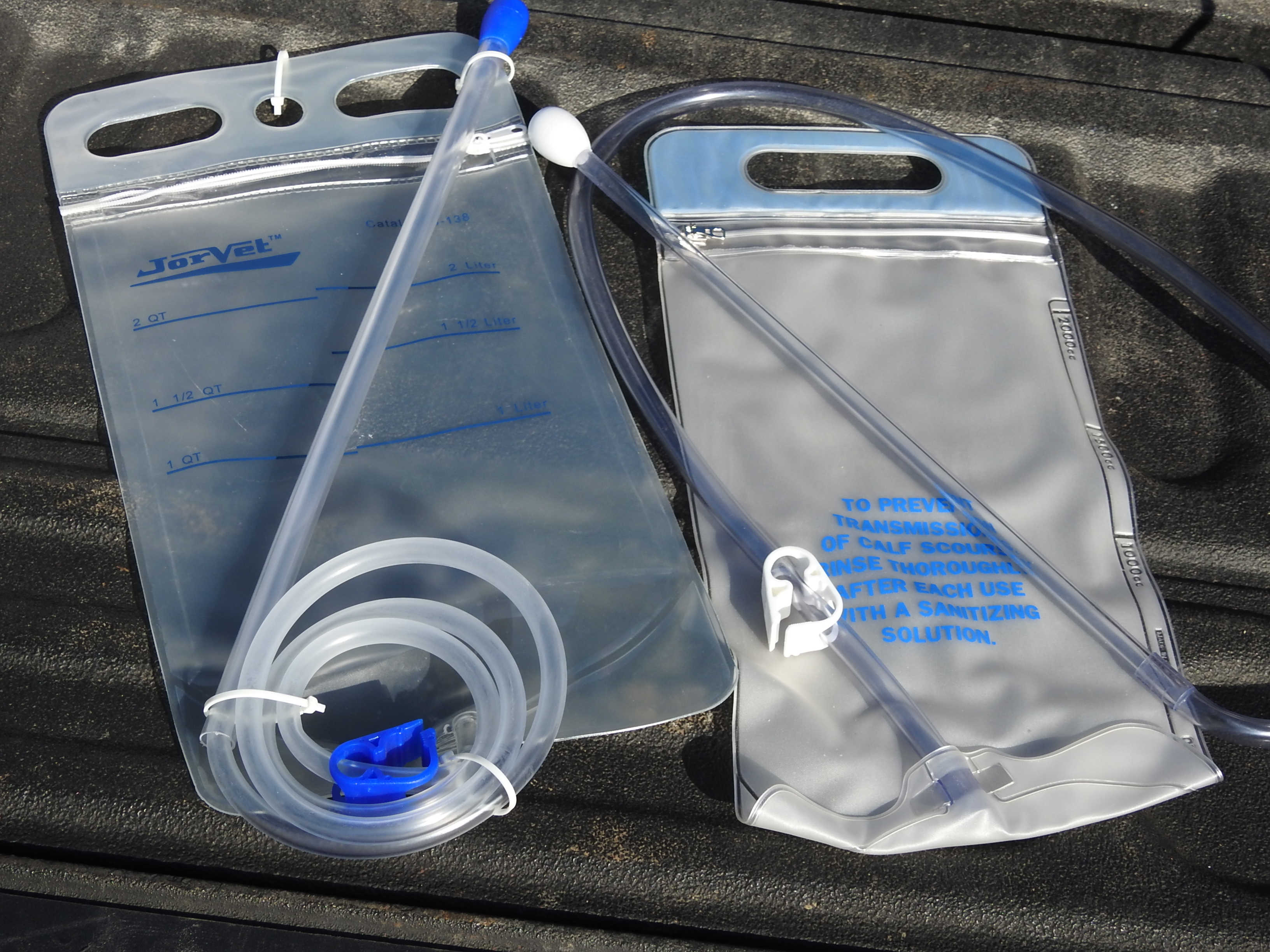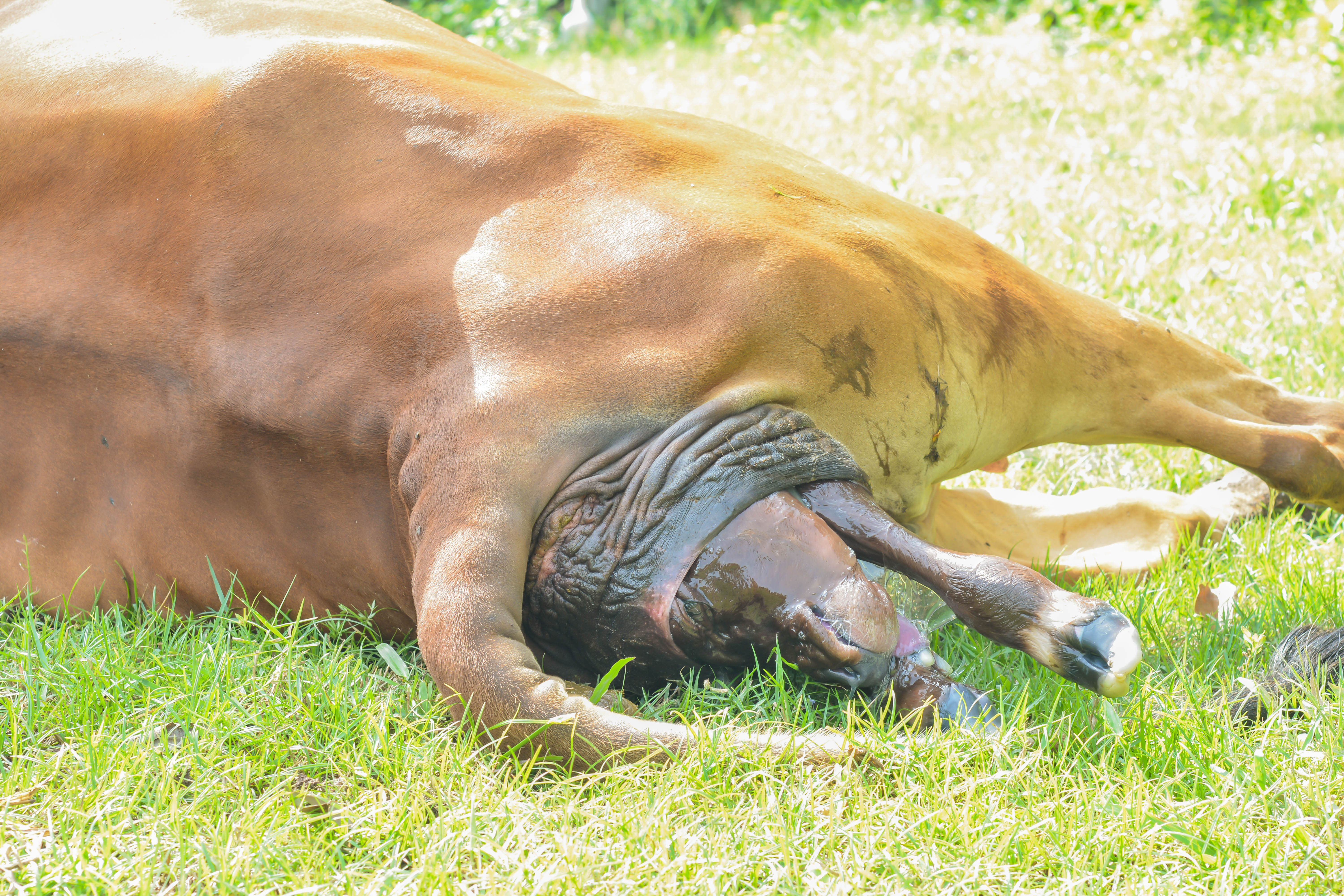Section 2 | Tackling Diarrhea in Young Calves
Page 11 /
Diarrhea Prevention
As diarrhea in calves can cause a reduction in growth and an increase in the risk of mortality, it is important to reduce the level of diarrhea in your herd through the implementation of preventative practices.
Specific practices that could reduce diarrhea levels include:
)
Colostrum Management
It is important to allow calves to suckle adequate colostrum from their dams within a few hours after birth. Colostrum has essential nutrients, such as immunoglobulins, that are critical in boosting calf immunity against common diarrhea pathogens.
If you notice that the calf has not nursed or you are unsure, milk the cow out and manually feed the calf using a nipple bottle or tube feeder. Alternatively, if there is not a safe facility to collect colostrum from the dam, colostrum replacers or frozen colostrum can be used to feed the calf. It is important to make sure that you’re using a replacer product and not a supplement. Replacers typically have IgG (the important antibody in colostrum) content ≥100 grams per package. Colostrum supplements often have much lower IgG content.
Assuring that the calf consumes an adequate volume of high-quality colostrum is the single best method to enhance calf health.

Cleanliness and Sanitation
Management efforts directed at decreasing exposure to manure and other contaminants will go a long way in reducing calf diarrhea. Maintaining a clean and dry maternity area, cleaning feeding equipment used to administer colostrum, and moving pairs out to a clean pasture as soon as possible following calving will all help in reducing the exposure of the calf to pathogens.
Vaccination
Prior to discussing the principles of vaccination for calf diarrhea, note that the effectiveness of vaccination is greatly reduced if management is poor. Colostrum MUST be consumed within 6 hours of birth, as the vaccines administered to the pregnant cow will put specific protective antibodies in the colostrum. Thus, if colostrum is not consumed in a timely manner, the vaccine will have no impact in reducing the risk of calf diarrhea. Also, if the pathogen challenge is high (e.g. dirty environment, exposure to older calves), no amount of vaccination will protect calves.

Vaccination for diarrhea pathogens can be done in two ways:
- Vaccination of pregnant cows or heifers in late gestation
- Vaccination of newborn calves with intranasal or oral vaccines
The goal of vaccinating pregnant cows is to increase specific protective antibodies against diarrhea pathogens in the colostrum. Most commercial vaccines will have protection against rotavirus, coronavirus, E.Coli, and Clostridium perfringens. The key to the success of this program is ensuring that the calves suckle colostrum quickly from their dam. The use of vaccines are especially important in first time calvers, as their quality of colostrum is lower than older cows.
Oral or intranasal vaccination needs to be provided to the calf immediately after birth to ensure its effectiveness. These vaccines contain purified colostrum antibodies against rotavirus, coronavirus and E.Coli that will help to prevent diarrhea caused by these antibodies.
Timing of the Calving Period
The time of the year that the calves are born can have an impact on the amount of diarrhea present in your herd. Calves that are born in cold, wet weather have a greater risk of exposure to pathogens via fecal contamination of muddy housing areas. Another consideration is the stocking density of the housing area. In cold and wet weather conditions, the cows may be housed inside at a high stocking density. More cows per square foot equal more manure per square foot. More manure means more pathogens that can cause bacteria in those calves!

The length of the calving season can also impact the spread of diarrhea. The pathogens that are responsible for diarrhea are often shed in the manure of dams. The longer the calving period, the greater the buildup of manure contaminating the calving area. Extra vigilance in keeping calving areas as clean as possible reduces the risk of diarrhea, saving effort and cost.
Calving Management
The Sandhills Calving System aims to reduce the amount of diarrhea by following these principles:
- Separating calves by age to prevent spread of pathogens from older to younger (more susceptible) calves
- Scheduled movement of pregnant cows to clean calving areas to minimize pathogen load and contact between the calves and the remainder of the cow herd
For this system to be functional, several large pasture fields must be available. As soon as calving begins, cows are moved to Pasture field 1. After 2 weeks of calving, the pregnant cows that have not calved move to Pasture 2, whereas, the cow-calf pairs remain on Pasture 1. Pregnant cows are again moved after a week of calving on Pasture 2, whereas cow-calf pairs that have calved on Pasture 2, remain on Pasture 2. Each subsequent week, cows that have not calved are moved to a new pasture and pairs remain in the pasture of their birth. Pairs from different pastures can be commingled when the youngest calf in the group is 4 weeks of age and all calves are considered low risk for diarrhea16.
The Sandhills Calving System reduces the amount of diarrhea on cow-calf farms. However, this system requires some additional management and considerations prior to the calving season.
Beef Cattle Research Council – Sandhills Calving System
Here is a good explanation of the system with valuable links on management strategies to prevent disease in young calves.
Take Home Messages
- Diarrhea is an important disease affecting young calves on cow-calf farms. It can lead to high levels of mortality, reduced growth performance, and significant economic losses
- Early diagnosis and treatment will help to reduce the impact of diarrhea
- Fluid therapy is the cornerstone of diarrhea treatment. Remember, antimicrobial medications are only justified when calves are exhibiting systemic signs of illness
- Prevention focuses on reducing the pathogen load through:
- Ensuring cleanliness of facilities
- Improving immunity against specific pathogens responsible for causing diarrhea
References
- Smith, D.R. 2007. Basic principles used in the “Sandhills Calving System” and how they apply to other production environments. Report in the Range Beef Cow Symposium. December 11-13, Fort Collins, Colorado. Available at: https://beef.unl.edu/beefreports/symp-2007-17-xx.shtml